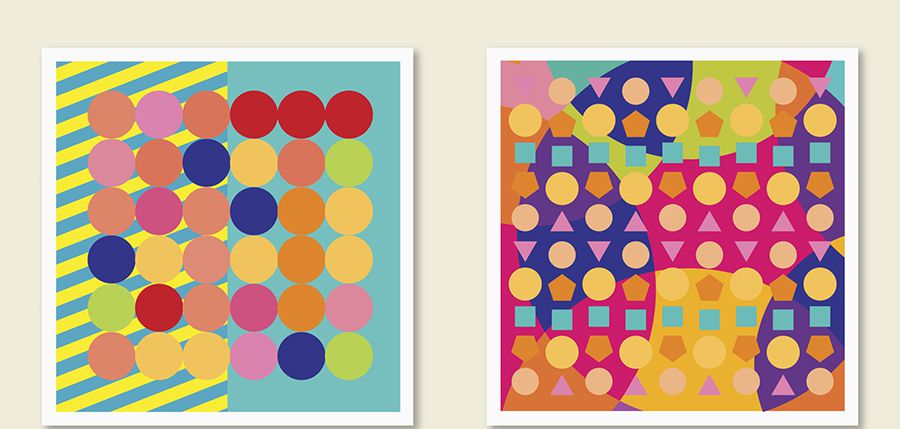外媒看中国:学中文的人色彩辨识力差?

Colours may be the same around the world, but the language in which they are described can have a significant impact on how they are perceived.
颜色本身在全球各地没有什么区别,但是人们用于描述颜色的语言却对这些颜色被感知的方式具有重要的影响。
In English, the most popular base colours are blue, pink and green, while in China red, blue and green are more prominent.
在英国,最常见的基本色是蓝色,粉红色和绿色,在中国,红色、蓝色和绿色则更为多见。
A data scientist wanted to put this theory to the test and, in doing so, has created a graphic that reveals how few ways there are in certain Eastern cultures to talk about colours, compared to the West.
一位数据科学家想要验证这一理论,他绘制了一张图标,这张图表证明,相对于西方文化,东方文化中描绘颜色的语汇要少得多。
Muyueh Lee from Taipei designed the infographic to show the range of names for colours and hues on Wikipedia, in English and then in Chinese.
来自台北的李慕约设计了这组信息图表,图表上展示了所有在维基网上可以查到的表示颜色和色差的词汇,首先是英语词汇,然后是中文词汇。
His method is biased as there are more Wikipedia users that are English speakers, but it does reveal the importance of certain colours in both languages.
他的研究方法存在误差,因为说英语的维基网用户人数更多,不过这项研究的确揭示了在两种语言中一些特殊颜色的重要性。
In Chinese, most popular base colours are 紅 (red), 藍 (blue) and 綠 (green). Colours can also relate to objects like salmon, stone and pine tree.
在中国人当中,最常见的基本色是红色,蓝色和绿色。这些颜色会让我们联想到鲜鱼肉,石头和松树。
This may be telling as red in Chinese cultures symbolises good fortune and joy. It remains a popular colour in the country and is affiliated with the current government.
这项研究成果值得相信,因为在中国文化中,红色象征的吉祥和喜庆。红色一直受到中国人喜爱,也被当前的政府加以宣传利用。
By comparison, popular English colours are blue, green and pink, with some colours based on objects.
相比之下,英国人喜欢的颜色则是蓝色,绿色和粉红色,只有一些颜色与实物对应。
'I was fascinated by the urban legend that Eskimo has 50 words for snow, and the idea that a culture will develop a richer vocabulary for things it cares,' said Mr Lee.
李先生说:“有一种传闻说,爱斯基摩语中有50个表示‘雪’的词汇,由此可见,一种文化会为其关注的事物创造出丰富的词汇。这种想法令我着迷。”
Mr Lee's graphic highlights the debate over whether speaking a certain language allows people to 'see' more colours, because they have more descriptions.
李先生的图像研究的重点是解决这样一场争论,即,是否由于一种语言中描述颜色的语汇更多,因而说这种语言的人就能“看”到更多的颜色。
A number of studies seem to suggest this may be the case.
一系列研究证明,事实似乎确是如此。
A 1954 study found that Zuñi speakers, a tribe of Pueblo Native Americans, found they do not differentiate between orange and yellow. As a result, they have trouble telling them apart.
一项1954年的研究发现在美国的一个印第安人村庄,说祖尼语的土著居民不会区分橙色和黄色。因而,他们很难将这两种颜色区分开。
A separate study focused on how Russian speakers have separate words for light blue (goluboy) and dark blue (siniy). MIT recruited 50 people from the Boston area in Massachusetts, half of whom were native Russian speakers.
另一项研究旨在揭示说俄语的人群是如何区分浅蓝色和深蓝色的。为此, 麻省理工学院从马萨诸塞州的波士顿地区邀请了50名参与者,他们中半数都是地道的俄语使用者。
They found they were 10 per cent faster at distinguishing between light (goluboy) blues and dark (siniy) blues than at discriminating between blues within the same shade category.
研究者发现,参与者区分浅蓝色和深蓝色的反应速度比区分同一明暗度的不同蓝色的反应速度要快10%。
(翻译:小木)